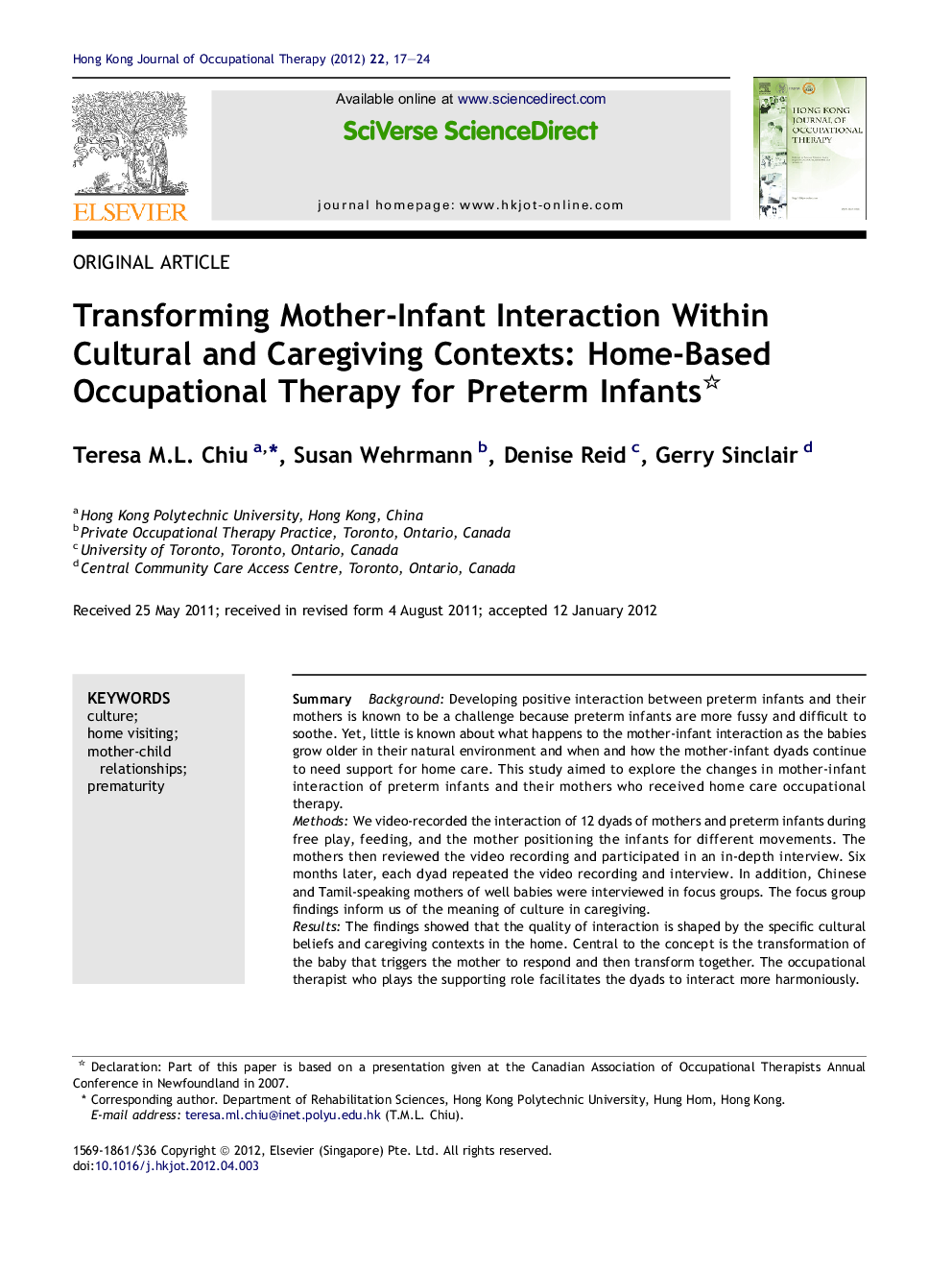| Article ID | Journal | Published Year | Pages | File Type |
|---|---|---|---|---|
| 2697653 | Hong Kong Journal of Occupational Therapy | 2012 | 8 Pages |
SummaryBackgroundDeveloping positive interaction between preterm infants and their mothers is known to be a challenge because preterm infants are more fussy and difficult to soothe. Yet, little is known about what happens to the mother-infant interaction as the babies grow older in their natural environment and when and how the mother-infant dyads continue to need support for home care. This study aimed to explore the changes in mother-infant interaction of preterm infants and their mothers who received home care occupational therapy.MethodsWe video-recorded the interaction of 12 dyads of mothers and preterm infants during free play, feeding, and the mother positioning the infants for different movements. The mothers then reviewed the video recording and participated in an in-depth interview. Six months later, each dyad repeated the video recording and interview. In addition, Chinese and Tamil-speaking mothers of well babies were interviewed in focus groups. The focus group findings inform us of the meaning of culture in caregiving.ResultsThe findings showed that the quality of interaction is shaped by the specific cultural beliefs and caregiving contexts in the home. Central to the concept is the transformation of the baby that triggers the mother to respond and then transform together. The occupational therapist who plays the supporting role facilitates the dyads to interact more harmoniously.ConclusionThis study proposes a new conceptualisation that allows us to unfold the process of change in mother-infant interaction for preterm infants and their mothers within the contexts of cultural values and the caregiving environment.
